NIL
Can Collective Bargaining Save College Football From Itself in the NIL Era?
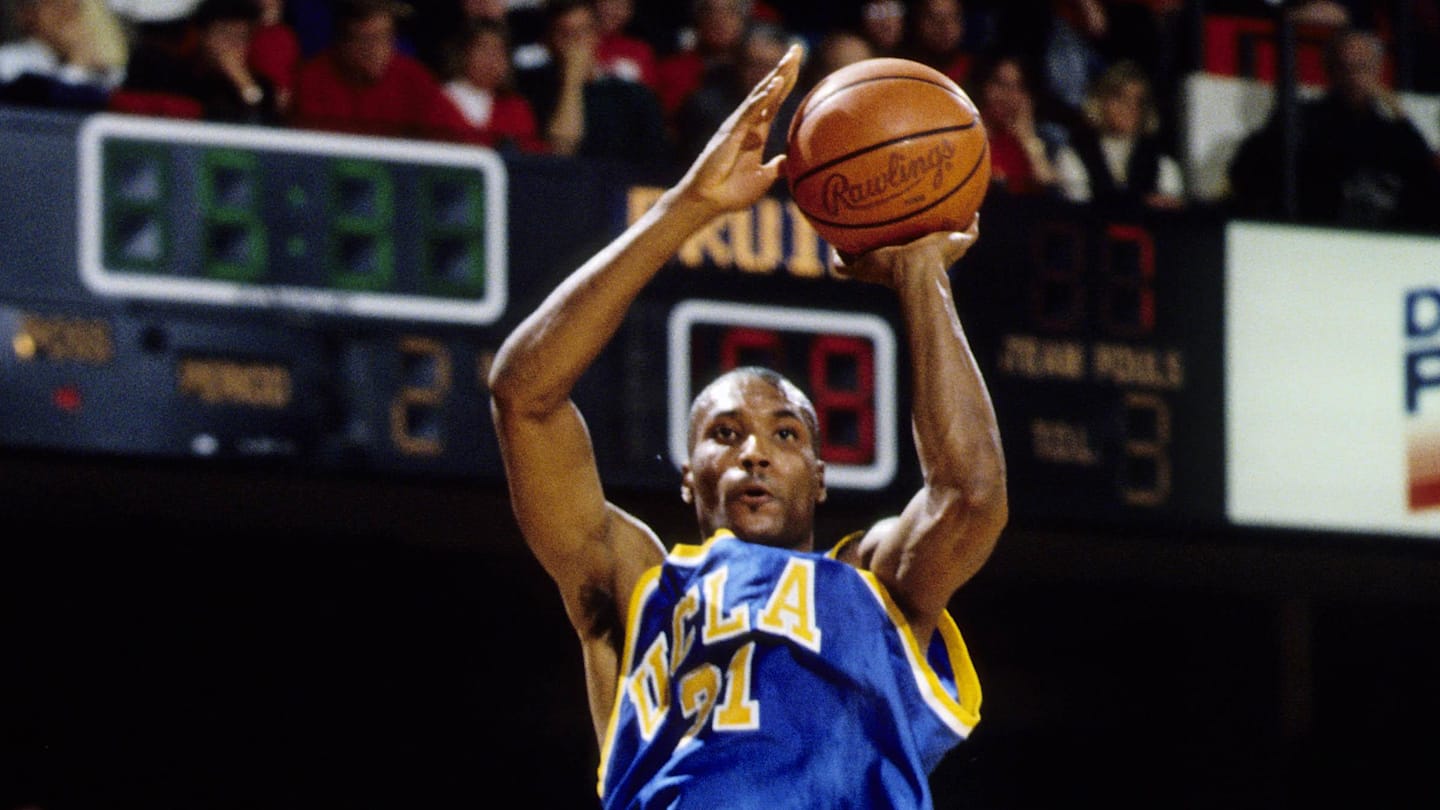
The House v. NCAA settlement has the state of college sports in a standstill as schools try to prepare for a murky future of paying players directly for NIL.
With the college football season beginning just months after the expected July 1 date, it’s been a chaotic nightmare of an offseason.
There’s not even a guarantee the settlement will be approved.
The worst part is that the players at the center of the issue weren’t consulted and don’t know what the future holds.
In the absence of that voice, the need for collective bargaining and a players union grows more critical by the day.
Jim Cavale, founder of the players association for college athletes, Athletes.org, spoke exclusively with NIL Daily On SI about the need for a sustainable solution in the form of collective bargaining.
Name, image, and likeness entered college sports as the result of a pivotal lawsuit filed by former UCLA Bruins basketball player Ed O’Bannon.
College sports have since been shaped by litigation, and is that truly the path it should continue to follow? Cavale doesn’t believe so.
“The only sustainable solution for college athletics to have rules that can be enforced without litigation is collective bargaining,” Cavale explained.
Before launching Athletes.org with former NFL player Brandon Copeland, Cavale founded INFLCR in 2017, which helped support athletes on social media to build their brand.
They were acquired by Teamworks, and Cavale stayed on as CEO as they built payment and reporting software for clients once NIL began.
Cavale observed that within the more than $300 million in transactions, most of the funds originated from donors who funneled money through collectives, essentially creating a pay-for-play model.
As court cases continued to be filed against the NCAA, Cavale saw the problems in an unstructured environment operating under the guise of NIL when it was really pay-for-play and sought to found Athletes.org.
To date, there are a record 4,700 members in the players association, making it the largest in America. Their focus has been on Power Four football and basketball, of which there are 2,300.
That’s where Cavale anticipates collective bargaining taking center stage first, but the reason he expects that is because of foreseen issues with an incomplete solution in the House settlement.
“We need a set of rules that can be enforced without litigation. We need them in all realms: transfer portal, free agency, compensation, health and safety, et cetera. The only way to do that is through collective bargaining.”
Collective bargaining would also give athletes a voice in this process they really haven’t been included in, despite the plaintiffs representing less than 0.1% of all athletes, all of whom are members of the players association.
“Unfortunately, not only has the greater group of college athletes that are going to be impacted [by House] not been included in that negotiation, but no athletes have been educated on anything pertaining to the settlement,” Cavale said. “The schools have said, We’re going to tell our athletes how it’s all going to work once it gets approved. There are tens of thousands of college athletes that are trying to piece together what this new reality is going to look like through media reports, not direct education from their schools.”
Cavale also pointed out that the compensation provided by schools does not truly qualify as NIL deals. These agreements are a form of pay-for-play. However, the contracts will pertain to NIL publicity rights.
Athletes may sign deals that limit their ability to use their likeness for outside endorsement deals because they’re disguised from their true purposes: their performance on the field.
“Leave real NIL endorsement opportunities open to those athletes, should they have the value, to go command those deals,” Cavale said. “Instead of trying to disguise these deals in a way where you now own their rights to do endorsements or can block them from doing certain endorsements because those brands might conflict with the brand sponsors of your school. That’s going to be a mess. There’s a real crux with how these contracts are being structured that will create a flurry of lawsuits.”
That void in education has created an opportunity for Cavale and his team, as their app educates their members on the topics of roster limits, how money will be dispersed, and why football is commanding a higher amount of $20 million.
The athletes also benefit from pro bono partnerships with law firms, accounting firms, mental health, and more as part of the free membership. Ultimately, they just want to know what the settlement means.
NIL
Ohio State QB Julian Sayin Announces NIL News Before College Football Playoff
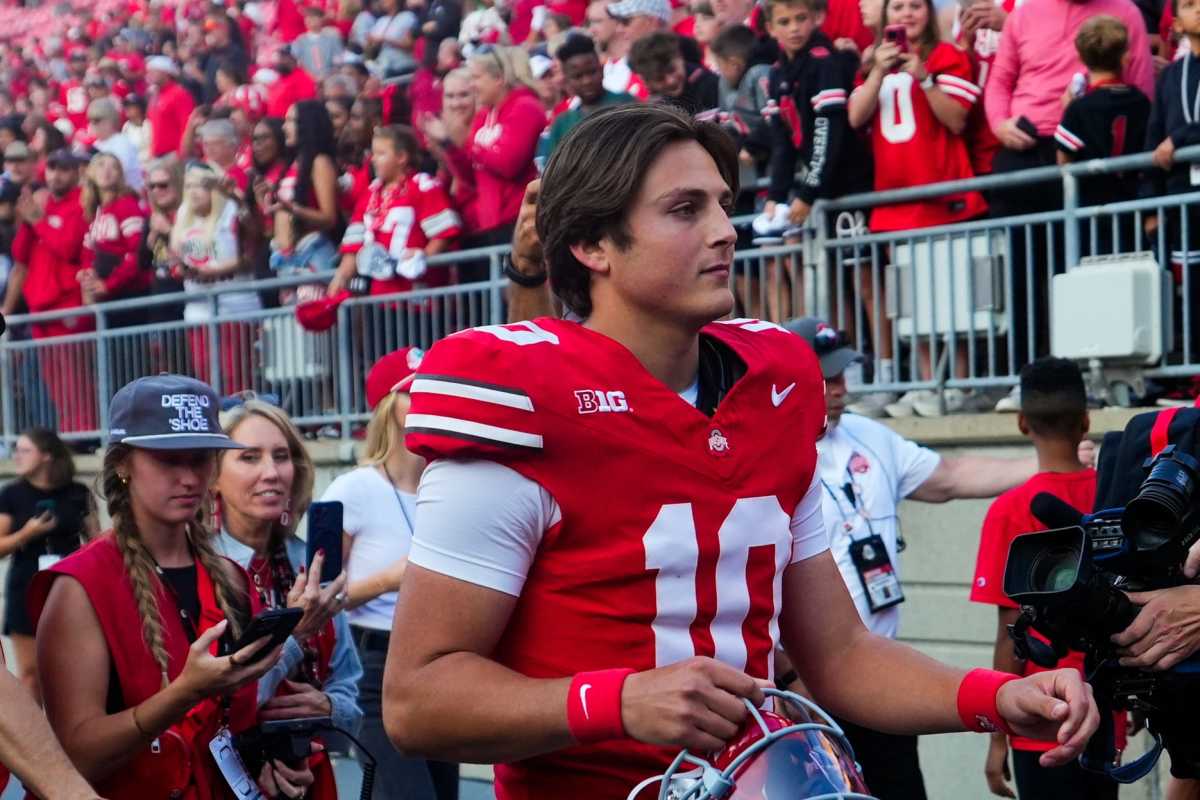
Julian Sayin is looking to lead the Ohio State Buckeyes to the national title alongside several other stars like wide receiver Jeremiah Smith.
Ohio State heads into the College Football Playoff with one of the best rosters in the country, starring Sayin and Smith along with wide receiver Carnell Tate, safety Caleb Downs and linebacker Arvell Reese.
Advertisement
They’re heading into the playoffs as the No. 2 seed after losing to Indiana in the Big Ten title game. The Buckeyes will have a bye week to begin the CFP.
Other teams that will benefit from the bye week include Indiana, Texas Tech and Georgia.
During his time off, Sayin shared some exciting news off the field. The Ohio State Buckeyes quarterback has partnered with Wingstop and Dr Pepper in his latest NIL deal.
“Postseason calls for big plays with @drpepper and @wingstop, had to get the play card out,” Sayin posted.
Advertisement
Sayin committed to Ohio State after spending some time with the Alabama Crimson Tide.
While he was planning his college football career at Alabama, he made the move to the Big Ten and finished his first season as the starting quarterback as a Heisman Trophy finalist.
Sayin was ranked as the No. 1 quarterback and the No. 6 overall player in the 2024 recruiting class, per 247Sports.

Ohio State Buckeyes quarterback Julian Sayin (10) Adam Cairns/Columbus Dispatch / USA TODAY NETWORK via Imagn Images
Before signing his latest NIL deal and sharing the news with fans online, Julian Sayin had inked deals with The Foundation, Dick’s Sporting Goods and JLab Audio.
Advertisement
Related: Alabama Reacts to Ty Simpson News Before College Football Playoff
Related: SEC Program Fires Coach After College Football Season
This story was originally published by Athlon Sports on Dec 16, 2025, where it first appeared in the College section. Add Athlon Sports as a Preferred Source by clicking here.
NIL
Stars Stay, Others Head to Portal
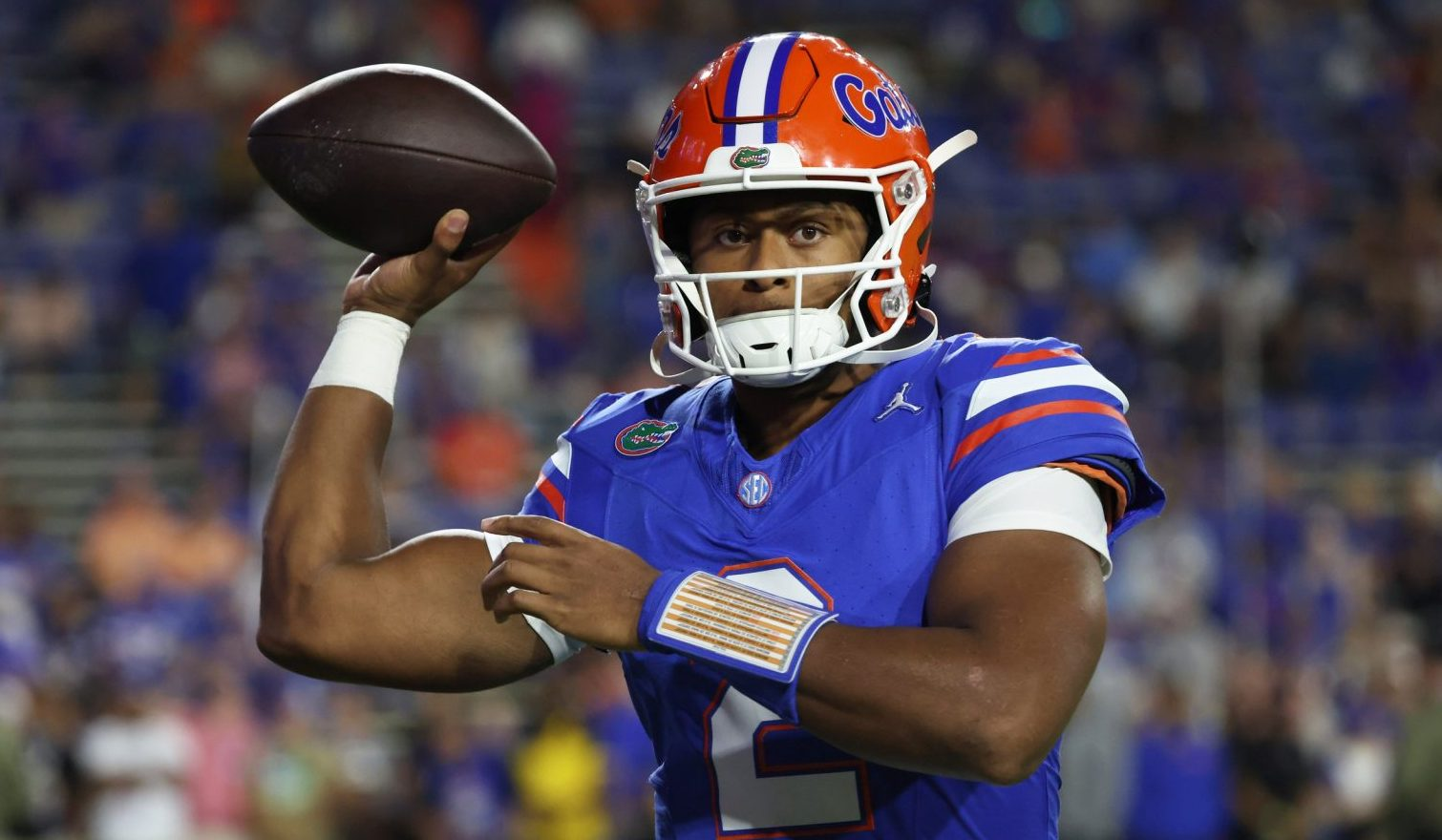
NIL
Texas A&M’s KC Concepcion has ‘not made a decision’ regarding future
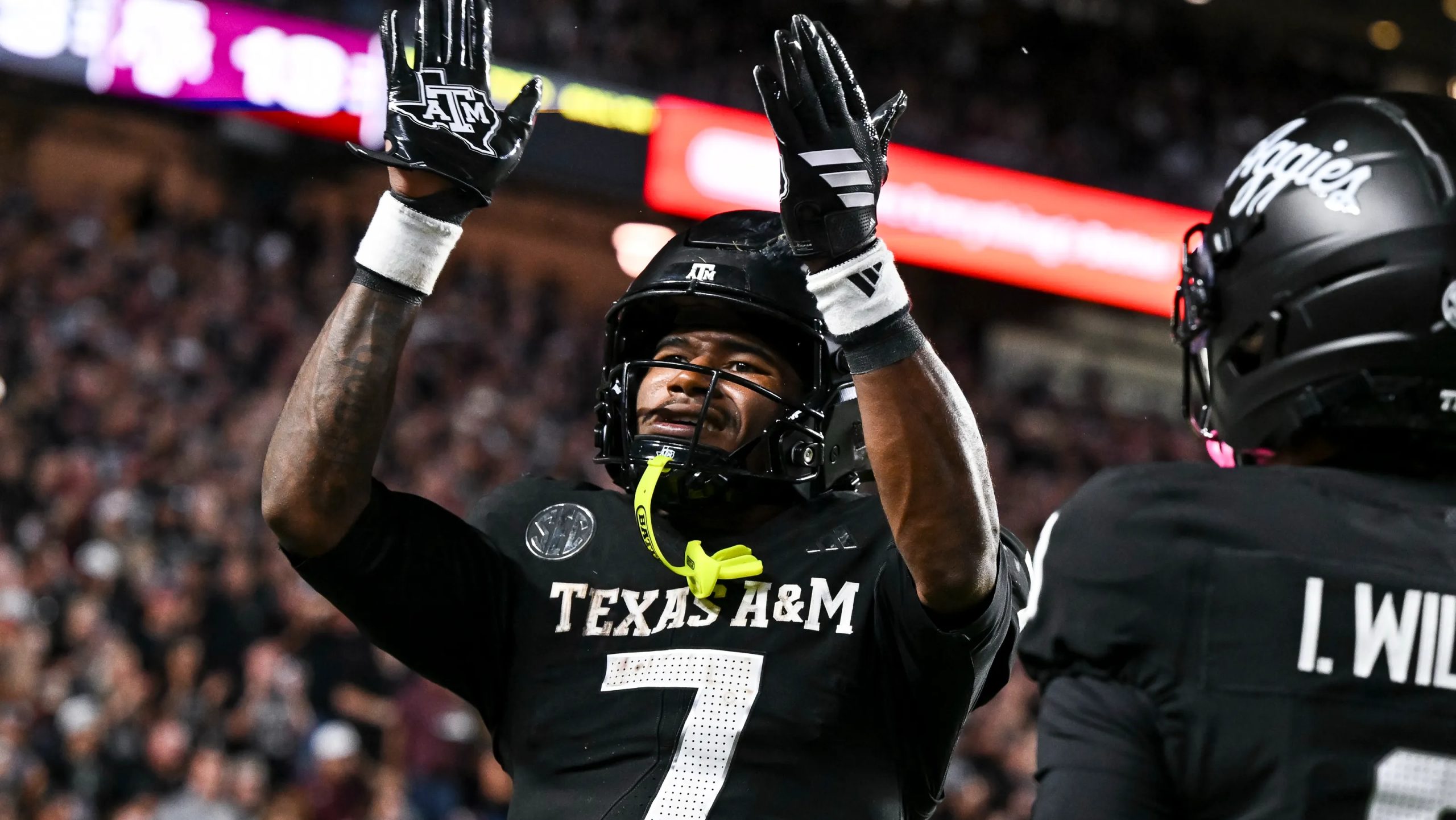
Dec. 16, 2025, 5:06 a.m. CT
Texas A&M’s 2025 offense finished the regular season ranked 19th nationally, while starting quarterback Marcel Reed threw for a career high 2,932 yards and 25 touchdowns, with 13 going to star wide receivers KC Concepcion and Mario Craver, who completely rejuvenated a passing attack that failed to move the needle in key games down the stretch last season.
While Craver is expected to return next season for his all-important junior year, Concepcion has a choice to make regarding his future, choosing between a final year in College Station or declaring for the 2026 NFL Draft, where he is expected to be a first or second-round selection.
Whatever choice he makes is entirely up to him and his family, and while those of us in the media have written numerous articles about his draft standing, returning for his senior season could benefit his NFL future. Still, Concepcion is as mature as they come and is entirely focused on facing the Miami Hurricanes this Saturday during the first round of the College Football Playoff.
On Monday, Concepcion took questions from the media ahead of the game and was asked about his potential return or a draft declaration.
“I have not made a decision yet.”
“Talking with my coaches, talking with my parents. We’re going to put our trust in God. Whatever He has in store for my future, we’re going to go like that.”
In today’s college football landscape, NIL deals have made returning for a final season much more appealing than the old structure, so a return in 2026 is not out of the question. However, Concepcion is viewed as one of the top prospects for his elite versatility as an NFL slot receiver and as a Day 1 punt return specialist.
This decision will be saved for the offseason, because defeating Miami and making it to the CFP Quarterfinals is all that matters right now.
Contact/Follow us @AggiesWire on X (formerly Twitter) and like our page on Facebook to follow ongoing coverage of Texas A&M news, notes and opinions. Follow Cameron on X: @CameronOhnysty.
NIL
Josh Pate defends Joel Klatt amid G5 backlash, proposes second tier to College Football Playoff

FOX Sports analyst Joel Klatt found himself in a social media firestorm after comments he made about the Group of Five on a podcast appearance on Next Round Live. Clips of that interview quickly went viral with short snippets of some of the quotes.
The gist of those snippets suggested that Klatt was anti-G5, to the point of wanting the G5 kicked out of the College Football Playoff. Klatt intimated that the only thing keeping the G5 in the playoff currently is the threat of litigation.
College football analyst Josh Pate had his own thoughts on Joel Klatt’s take. He mostly came to the defense of the suddenly targeted analyst.
Pate first played a couple clips from Klatt’s appearance in their entirety. That offered more full context.
“Some of that was insane, I’m going to grant you that,” Pate said of Klatt’s points. “I just want to say the foundation of it I at least understand. The foundation of it is sound. Not all the parts of it. The foundation of it is sound.
“Couple of quotes there. No. 1, the G5 is in the College Football Playoff to avoid litigation is basically true.”
Pate lambasted the use of quote edits in condensing Joel Klatt’s much larger point into a few soundbites. He tried to explain how that’s misleading to his viewers.
“You know sometimes how you see a snapshot or a small soundbite of something and you get outraged by it and then you go on to learn the context of it two weeks later and you’re like, ‘Wow, I probably shouldn’t have gotten as outraged as I did over that,’ Pate said. “That is what is happening to Klatt. Admittedly he brought a lot of this on himself. …
“Now, what you probably saw was you probably saw quote edits like this or quote graphics like this. And if you’re listening on podcast just imagine scrolling through your social feed and there’s a picture of Klatt, looks like he’s somewhere sunny and happy and there’s a quote at the top, and it says, quote, ‘We don’t want Cinderellas. We want the best teams playing each other at the end. It’s the dumbest tournament and the least fair tournament in all of sports.’”
That part from Joel Klatt, obviously, was what many detractors latched onto. But it doesn’t take away from Klatt’s overall point about the G5, Pate pointed out.
So all the moaning over James Madison being in the playoffs is for naught. That’s just the way the current structure is set up.
“They are present in the playoff, they’re granted an auto bid in the playoff because if they are not then lawsuits will be filed immediately,” Pate said. “So that part’s accurate.
“Now whether or not you think it’s morally sound that they’re included in the playoff, that’s your own opinion. He’s got his, I’ve got mine, you’ve got yours. But he is right. Because in no other merit-based world where we just judged these teams on a static scale of quality, of resources and therefore what you do with the resources, and the results on the field and strength of schedule, in no world would James Madison be in the playoff. But the parameters of the playoff right now are that we take the five highest-ranked conference champs. So by every current rule James Madison is in the playoff and should be in the playoff. I don’t disagree with that. Tulane is in the playoff and should be in the playoff. I don’t disagree with the structure. I don’t disagree with the body of the playoff this year based on the current rules.”
So what’s the solution? Well, Joel Klatt also offered an answer for that. It just didn’t happen to go viral with the other stuff.
Klatt believes the G5 should effectively break off from the power conferences and host its own playoff. It would be a playoff tier between the FCS and the FBS.
“That’s been the same point that’s been made on my show,” Pate said. “So you notice if you really hated the G5 you’d just say, ‘Piss on the G5.’ That’s not what he did, despite the fact that that part didn’t get shared widely and it’s not what I’ve ever done on this show.
“Any time you have a problem with something, you ought to have a solution for it. So if your problem is, ‘Man, it makes little sense that we’ve got 136 teams pretending to play the same caliber of the sport’ you need to have a solution. That solution he just presented is the same one we’ve shared on this show, and that is a G5 playoff.”
NIL
How NIL has transformed Ohio State’s recruiting from star-chasing to strategic roster building
COLUMBUS, Ohio — The days of simply collecting as many five-star talents as possible in college football recruiting are over.
In a revealing Buckeye Talk podcast episode, Ohio State analysts Stephen Means and Andrew Gillis detailed how the program has shifted to a more sophisticated “roster construction” approach that mirrors NFL team building more than traditional college recruiting.
“I think that because the financial aspect has come into this but also just logical roster building that has become more of a focal point than star, star, star, star, stars,” explained Stephen Means. “Because for a long time, college football was like, get as much talent as you humanly can, develop it, cuz you were living in a world where the top 1% of college football had all the talent. And that’s not true anymore.”
This fundamental shift in philosophy is perhaps most evident in how Gillis described Ohio State’s running back recruiting needs for the 2027 class. While five-star David Gabriel Georgees tops their board, the approach is more nuanced than just stacking elite talent.
“If they got three five stars running backs, the odds that we got on this podcast and said that’s actually probably not that good is higher than it might seem because we were saying why is your asset management this? Like because hey, look at your your receiver recruiting was down. You couldn’t have spent some of that money on a receiver,” Gillis explained.
The financial component of recruiting has transformed how Ohio State approaches each position group and recruiting class. It’s no longer just about who’s the best player available, but whether investing heavily in one position might shortchange another.
“It is a math equation. It is a money equation at this point. You’re not going to go get three five stars at running back in a single class,” Gillis emphasized.
Means further elaborated on how NIL money has forced this change: “You can’t pay a fivestar recruit, fivestar recruit money and then have the guy sitting on the bench because there’s another guy with there’s only so much money to go around.”
This strategic approach has Ohio State looking at players through different lenses: “ready to go” immediate contributors (typically five-stars and top-100 recruits), “developmental” prospects (usually ranked 200-350 nationally), and “depth” pieces who might be ranked lower but fill specific roles.
The analysts identified several instances where this approach is evident in Ohio State’s 2027 planning. At quarterback, they’re content with a developmental prospect in Brady Edmonds rather than chasing another five-star. At wide receiver, despite already having five-star Jir Brown committed, they believe Ohio State needs another elite receiver plus two depth pieces to properly structure the room.
“Now we are talking about roster construction,” Means said. “And the reason why we structured it this way is okay, they went and got a devel they have a developmental quarterback in 2027. They probably need a ready to go quarterback in 2028 and they probably need a depth quarterback in 2029. And the cycle continues, right?”
This staggered approach ensures Ohio State will have players at different stages of development at every position, creating a sustainable pipeline of talent ready to contribute when needed.
“Everybody everybody’s running the same race, but they can’t be running it at the same pace or you’re not going to have a team to field every single year,” Means added.
The conversation revealed how Ohio State’s recruiting approach now more closely resembles NFL roster management, with considerations for “salary cap” (NIL budget), positional value, and development timelines all factoring into decisions that previously might have been simply about collecting the highest-ranked players available.
As college football continues to evolve in the NIL era, this strategic roster construction philosophy may become the new standard for elite programs looking to maintain sustainable success.
Here’s the podcast for this week:
NIL
Texas Tech announces football staff contract extensions
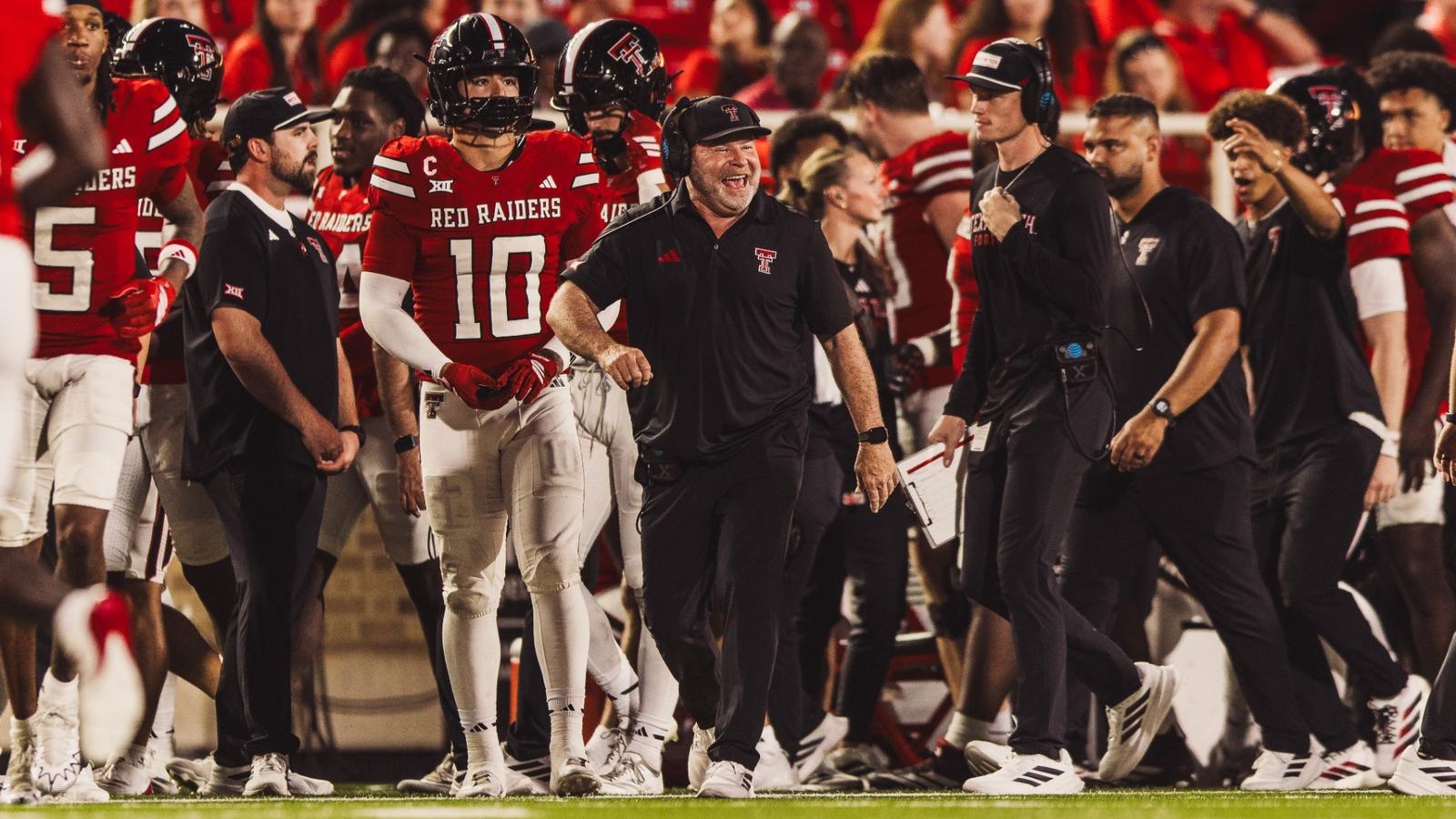
LUBBOCK, Texas – Texas Tech announced Tuesday it has come to terms on contract extensions for four key members of its football coaching staff: general manager James Blanchard, offensive coordinator Mack Leftwich, associate head coach and special teams coordinator Kenny Perry and defensive coordinator Shiel Wood.
Texas Tech agreed to the extensions with Blanchard and its three coordinators in recent weeks, pushing each of their contracts through the 2028 season with significant financial investments included as well as a revised buyout structure. McGuire, himself, agreed to a new seven-year contract following the regular season, only days prior to leading the Red Raiders to their first Big 12 Conference title in school history.
“I appreciate Kirby Hocutt and our administration for proactively investing in the future of our football program,” McGuire said. “Our expectation is to compete annually for championships with this staff and the resources we have in place here at Texas Tech. While we still have goals in front of us this season, we’re thankful to have the support of an incredible fan base and administration that believes strongly in the future of this program.”
Texas Tech enters the College Football Playoff Quarterfinal at the Capital One Orange Bowl with a 12-1 record, having already snapped the single-season school record for wins ahead of a potential matchup with either No. 5 Oregon or No. 12 seed James Madison. The Red Raiders are in the College Football Playoff for the first time in program history following a 34-7 rout over previously-No. 11 BYU in the Edward Jones Big 12 Championship.
Texas Tech has dominated opponents this season with all 12 wins coming by at least 20 points. In the process, the Red Raiders joined only Alabama in 2018 as the only teams in the Associated Press era (since 1936) to record 12 or more wins by 20-plus points prior to a bowl game. The 12 wins by that margin are already both a Texas Tech and Big 12 Conference record and are one shy of the FBS record that was set by Clemson in 2018.
The Red Raiders’ success has stemmed from all three sides of the ball with a stingy defense, another high-scoring offense and an aggressive approach on special teams. To date, Texas Tech is the only team in the country to rank in the top five for scoring offense (42.5), scoring defense (10.9), total offense (480.3 yards per game) and total defense (254.4 yards allowed per game). The Red Raiders are also the FBS leaders in both takeaways (31) and rush defense (68.5 yards allowed per game) and rank 10th for passing offense (289.4 yards per game), creating the balance McGuire desired upon his hiring four years ago.
On special teams, the Red Raiders have combined to block five kicks this season, which is tied with Penn State for the most in the FBS. Texas Tech has been among the most-aggressive teams in the country under Perry, blocking a total of 14 kicks during his four seasons, which leads all Big 12 programs during that span and ranks in the top five nationally. Texas Tech is also the only team in the country to rank in the top 20 for both kick return average and kickoff return defense this season, all while boasting a Paul Hornung finalist in running back and returner J’Koby Williams and a Lou Groza semifinalist in kicker Stone Harrington.
Perry was a charter member of McGuire’s staff upon his hiring prior to the 2022 season as he has been part of four-consecutive bowl appearances and 25 wins over Big 12 opponents, the most in the conference during that span. Both Leftwich and Wood are completing their first seasons on staff after arriving this past offseason on three-year contracts.
Kickoff for the Capital One Orange Bowl is set for 11 a.m. CT on New Year’s Day with coverage provided on ESPN and the Texas Tech Sports Network.
-

 Motorsports3 weeks ago
Motorsports3 weeks agoRedemption Means First Pro Stock World Championship for Dallas Glenn
-

 Motorsports3 weeks ago
Motorsports3 weeks agoJo Shimoda Undergoes Back Surgery
-

 NIL2 weeks ago
NIL2 weeks agoBowl Projections: ESPN predicts 12-team College Football Playoff bracket, full bowl slate after Week 14
-

 Motorsports7 days ago
Motorsports7 days agoSoundGear Named Entitlement Sponsor of Spears CARS Tour Southwest Opener
-

 Rec Sports3 weeks ago
Rec Sports3 weeks agoHow this startup (and a KC sports icon) turned young players into card-carrying legends overnight
-

 Rec Sports2 weeks ago
Rec Sports2 weeks agoRobert “Bobby” Lewis Hardin, 56
-

 Motorsports3 weeks ago
Motorsports3 weeks agoPohlman admits ‘there might be some spats’ as he pushes to get Kyle Busch winning again
-
Sports2 weeks ago
Wisconsin volleyball sweeps Minnesota with ease in ranked rivalry win
-
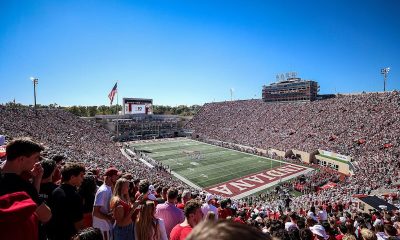
 NIL3 weeks ago
NIL3 weeks agoIndiana’s rapid ascent and its impact across college football
-

 Motorsports1 week ago
Motorsports1 week agoDonny Schatz finds new home for 2026, inks full-time deal with CJB Motorsports – InForum






























